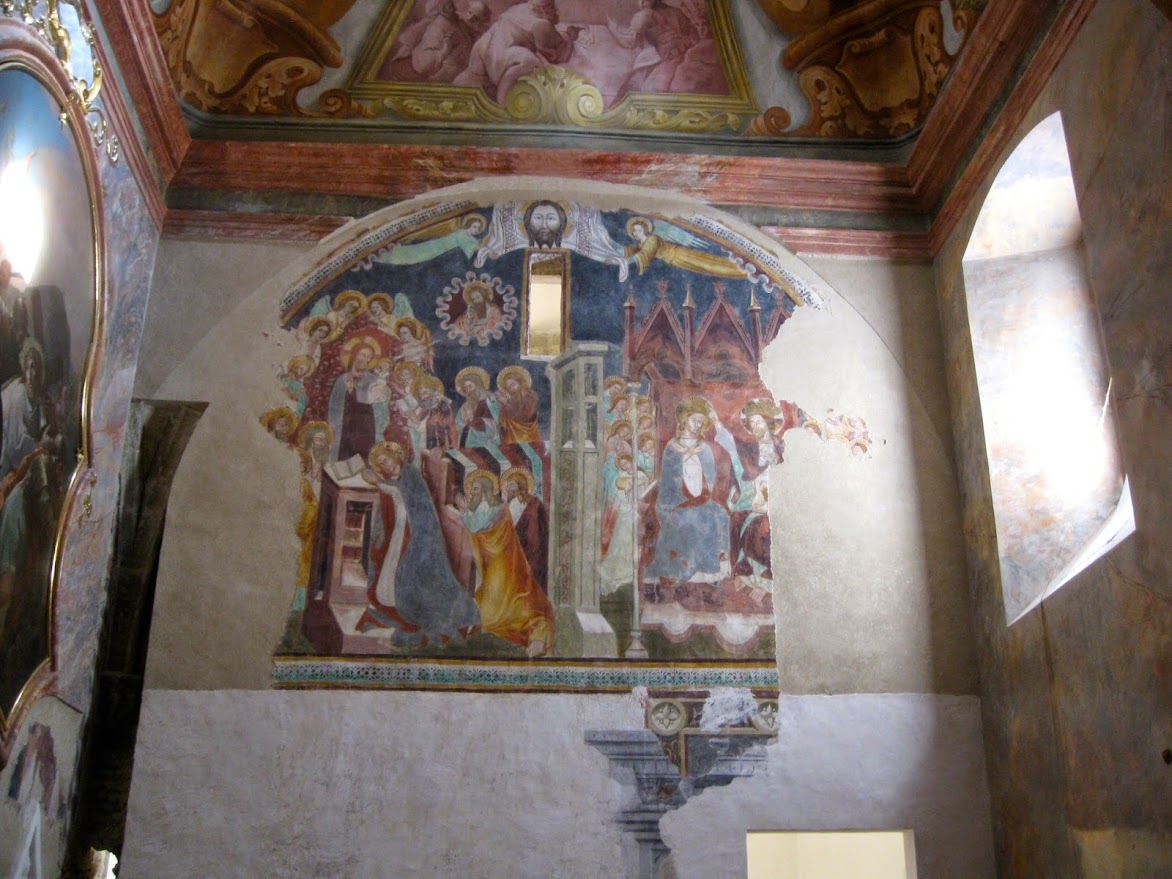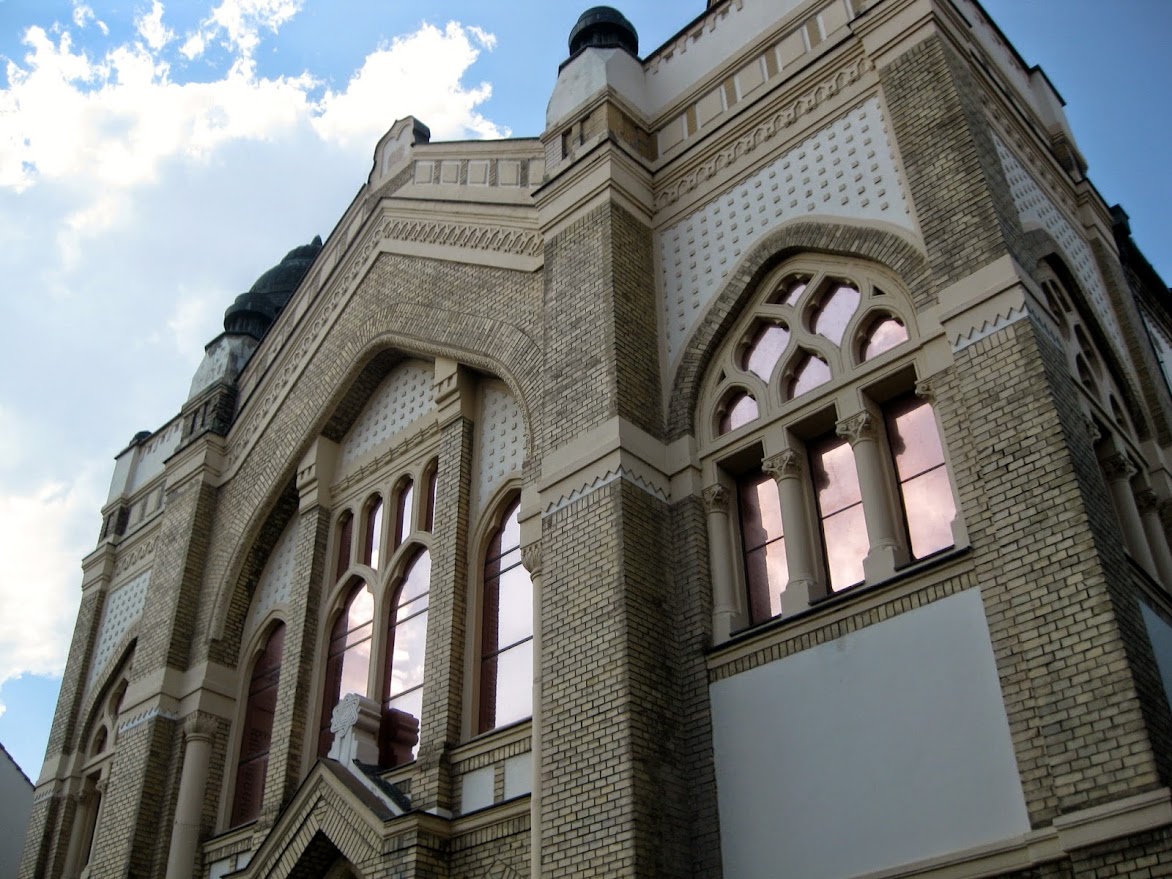Nitra makes a striking impression when you're driving past it on the R1 freeway. With its dramatic, spire-studded skyline and the way it sprawls out at the base of the gigantic Zobor hill, it looks like an important city.
Even Nitra's long history gives the impression of a substantial, must-see destination: as the oldest city on the territory of today's Slovakia, it's called the "mother of Slovak towns", and was the center of the Great Moravian Empire. It was also where Byzantine Greek monks Cyril and Methodius were invited in the 9th century to spread their religion and create the Glagolithic alphabet (an early version of Cyrillic) for the region's Slavic language. All of this has factored heavily in Slovak national mythology (to the consternation of some historians) and Nitra seems to hold special importance for many Slovaks.
And yet, when you actually make your way into the city and take a gander at the center, you might feel a bit deflated after all of that build-up. In fact, if you speak to some locals or in-the-know expats about Nitra before going, they will likely implore you to lower whatever expectations you might have for the place.
I'd been there once before a few years ago on a lightning-fast, spur-of-the-moment excursion with Terezia's brother Tony, which was too brief to really get a handle on it, and I didn't even have my camera. I finally got the chance to go back and explore Nitra a little more in depth recently when my work kindly and generously took us there recently for a staff outing.
Like many Slovak cities and towns, Nitra has a pedestrianized historical center and a castle with a big cathedral that overlooks the city from a steep hill. But its historical center, made up of the older "upper" town with the castle, and the more recent "lower" town below, has noticeably less charm and 'old world' ambiance than those in many other towns, and the "lower" town suffers from considerably more communist-era (and contemporary) intrusion than normal. While the buildings in the "upper" town are all uniformly old, even these are a little bit less exciting than what other Slovak towns have to offer.
Part of the problem is that Nitra suffered from heavy bombing during WWII, and poorly conceived communist-era redevelopment plans added insult to injury.
The main square is vast and expansive, but also kind of soulless and uninviting. A big fountain in the middle attempts to liven things up, but there's very little architectural eye candy to hold one's attention beyond the communist-era Divadlo (theater) building. Anyone expecting a cavalcade of unique and ornate Habsburg-era facades, a la Košice's Main Square, might be in for some disappointment. There's really not much left here that reflects this city's ancient past and historical significance, aside from the view of the "upper" town and castle complex in the distance.
Still, a few of the pedestrianized side streets manage to conjure up an agreeable atmosphere with mellow bars and cafes that give off a student-y vibe. Nitra is a big university town, after all, and some of the establishments in the center seem to be trying to cater to that crowd.
The "upper" town is noticeably quieter, since it's really only of interest to tourists, of which there aren't that many. The main cobblestone street winds gently up the hill to the castle and the cathedral of St Emeram, which is visible from just about everywhere in the town below.
To enter the complex you cross a bridge via a steep, stone walkway that leads you through a thick, double-gated bastion.
The church you see today was essentially built over two smaller churches, portions of which are still visible, and recent excavations have uncovered a possible fourth. The Baroque clock tower is extremely typical for central Europe. Sadly, it was covered in scaffolding when we were there - a photographer's worst nightmare.
The cathedral made news recently when a rare, invaluable 14th-century medieval fresco was discovered on the wall behind an ornate 17th-century marble altarpiece, itself an important work of art. There was a wee bit of controversy when the church decided to relocate the gigantic altar from its intended spot to the other end of the lower nave, so as to uncover and display the fresco. The fresco is believed to be the only one of its kind in central Europe, as it's much more typical of frescoes from central Italy.
The cathedral interior is lavishly detailed, goopy, 18th-century Baroque vomit, with lots of dark red marble, and sculptures and ceiling frescoes that go for maximum drama.
 |
| The rare Medieval fresco |
The castle buildings that surround the cathedral have all been restored and scrubbed down, and boast some really cool crenelations. One houses a cafe and a museum. Visitors can tromp around on some of the castle's fortifications for panoramic views over the city.
The castle walls were reinforced after a 17th-century invasion by the Ottomans, during which they converted part of the cathedral into a mosque, used another section as a stable, and defaced a bunch of the art.
Just outside the complex is the requisite Baroque plague column. Down the hill a bit you can find a popular statue of Corgoň, Slovakia's version of Atlas, propping up the corner of an old building. His worn down toes are not a result of a nasty case of leprosy: local legend has it that rubbing them will bring you some of his super human strength. Not far below him is the sloping, grass-covered Pribina Square centered on
a statue of a sword-wielding Prince Pribina, Nitra's first ruler, who from a distance looks like he suffers from a massively swollen Popeye arm, which on closer inspection turns out to be an extremely puffy sleeve.
At this point I should mention that before going up to the castle, our manager thought it would be fun for us to take a ride in one of those
tourist trains - those silly little cars that tow a couple of wagons done up to look like old fashioned trains, which cart lazy tourists around the historical sections of old cities.
We piled into the first car and immediately realized that the big windows were all completely covered with thick sheets of clear plastic, which kept out any trace of much-longed-for breeze on this hot and sticky day, and made us feel like infants trapped in a locked car in a heatwave. The plastic was also a bit dingy and scuffed, which meant that any photos taken through it would come out blurry. Before the tourist train took off, our manager got out and asked the driver if he could do something about this. I didn't catch what was said, but the driver seemed amenable, even though he appeared to act as if the idea of doing this had never occurred to him. So, we helped him roll up and fasten the sheet on one side (apparently we'd only be getting one), and problem solved.
Yet, he seemed oblivious to the fact that the poor folks in the second car were also about to pass out from heatstroke, and a woman in that car actually had to get out and ask if they could do the same with their plastic sheets. Classic.
At any rate, this tourist train took us through a bit of the "lower" old town, then around to the back of the castle hill into a big, shady park, and eventually into the "upper" town and all the way up to the castle at the top. The driver said we had 20 minutes to piddle around, but since the cathedral at that moment was closed for lunch for the next half hour until 1:00, we said screw it and hung around so we could get a more thorough look at the complex, opting to just walk back down when we were ready.
On our way back down, as we crossed over from the "upper" town back into the "lower" town, we passed the now infamous Mariatchi bar, a popular student hangout where last fall surveillance cameras caught a bunch of neo-Nazi skinheads viciously assaulting some people in the street. Controversy ensued when it was discovered that the culprits had all been arrested and then promptly released with no charges, only to be re-arrested after the camera footage was discovered and publicized a month after the incident by a media outlet. (Eventually Slovakia's general prosecutor dismissed one of Nitra's district prosecutors for mishandling the case; not sure what's happened with the skinheads, though). Anyway, it felt slightly eerie when we realized we were walking through the intersection where the attack occurred.
Once back in the "lower" town, we took a break in Antikvariat, a cafe with a cool, appealingly funky Bohemian vibe that's not all that common in this country. With groovy vintage furniture, dusty old books piled up everywhere, and weird modern art on the walls (and ceiling), the place gives off that hip, college-town cafe atmosphere in spades. I savored a refreshingly cold and tasty frappe.
We ambled around the pedestrianized section a bit and slowly made our way to the old synagogue. Luckily, this one was not left to deteriorate (or else it was immaculately restored at some point), and from the exterior, at least, it looks to be in excellent shape. These days it's rented out for special events.
 |
| The synagogue |
There was talk of heading up to Nitra's Calvary, which reportedly offers "the best" view of the city (in addition to a gruesome crucifixion scene), but time was running out, and then we were suddenly distracted by a tea shop across the street from the synagogue, called Tea House of Good People. The scent of Nag Champa permeated the front rooms of the shop, which sold a vast assortment of tea and tea sets, as well as geodes, bonsai trees, and buddha figurines. A cafe in the back served an extensive tea menu. After piling into a big corner booth in the back room, we each ordered an exotic, if somewhat overpriced, tea concoction (mine involved fresh orange juice).
By the time that was done, we needed to get going if we wanted to make the bus that would get us back to Bratislava around 6:00. So, we leisurely made our way back through the pockmarked streets, communist-era detritus, and a strange semi-outdoor market to the main bus station.
I'm sure there were several sights and a few interesting ramshackle streets that went unseen, but I'm glad I was at least able to see and get a feel for the city. I'd say Nitra is for completists only - not a place I'd include on a list of must-see sights. But if you're driving by on the R1, enjoy the panorama of the city (without wrecking your car, of course), and take comfort in the knowledge that if you don't make it there, you're really not missing out on anything life-altering.
